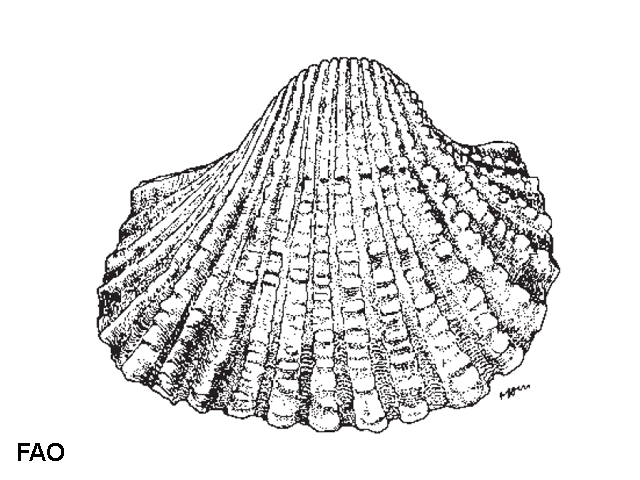| Arcidae () |
| 9 cm SHL (male/unsexed); max. reported age: 12 years |
|
benthic; brackish; marine; depth range 0 - 20 m |
| Indo-Pacific. |
|
Shell equivalve, thick and solid, ovate, strongly inflated, slightly longer than high and feebly inequilateral. Umbones strongly protruding, cardinal area rather large. About 18 radial ribs (15 to 20) with wide interstices at each valve; ribs stout and distinctly rugose, bearing regular, often rectangular nodules. Periostracum rather thin and smooth. Internal margins with strong crenulations corresponding with the external radial ribs. No byssal gape. Colour: outside of shell white under the yellowish brown periostracum. Inner side white, often tinged yellow towards the umbonal cavity. |
| This represents the most important commercial ark (Ref. 348). Lives in intertidal and shallow subtidal waters. On muddy bottoms, mainly in protected bays and estuaries, or in mangroves. Often occurring in dense populations (Ref. 348). Typically found in the intertidal with silty bottoms with low salinity. A filter-feeder and a shallow burrower. Primarily feeds on organic detritus, phytoplankton and detritus (Ref. 101198). |
|
Not Evaluated (N.E.) Ref. 123251)
|
| harmless |
|
Source and more info: www.sealifebase.org. For personal, classroom, and other internal use only. Not for publication.

